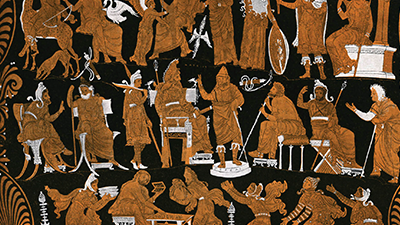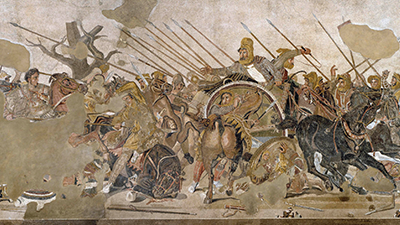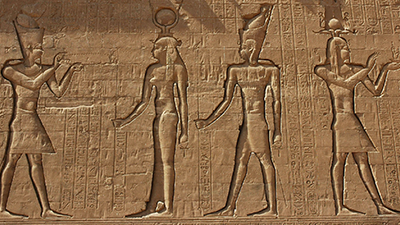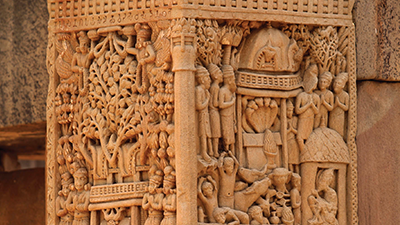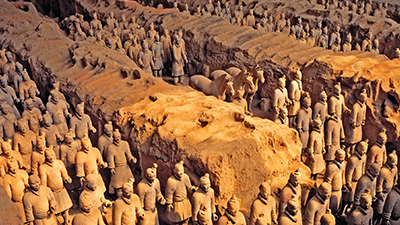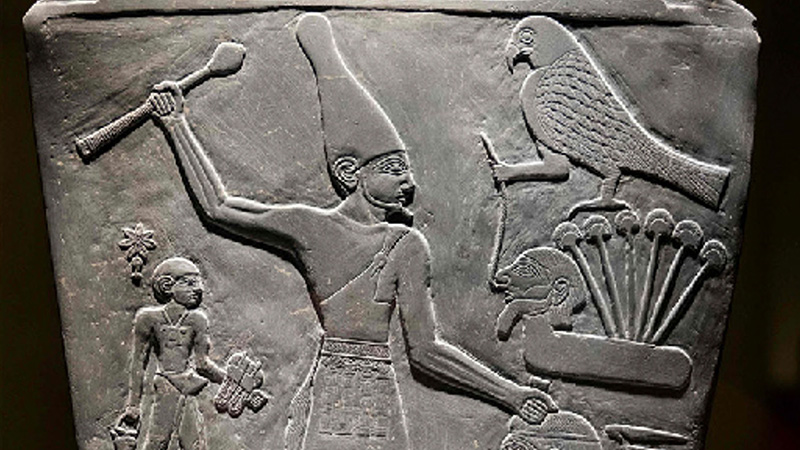Comparing Ancient Empires
Teacher Resources
Driving Question: Why did some states grow into empires?
What makes an empire successful? Why do empires decline and fall? By examining and comparing different empires over time, we can begin to see the characteristics shared by successful empires and those that led an empire to decline.
Learning Objectives:
- Analyze characteristics of empires to identify what made them successful.
- Use causation skills to decide which factors will lead to the decline or fall of an empire.
- Use quick-sourcing skills to evaluate how governments maintained power and how different societies interacted with each other through networks of exchange.
Vocab Terms:
- bureaucracy
- cosmopolitan
- mandate of heaven
- meritocracy
- republic
- satrapy
- tribute
Opener: Comparing Ancient Empires
To teach this lesson step, refer to page 2 of the Lesson 4.4 Teaching Guide.
For all things related to claims, check out this Claim Testing page on the OER Project site.
Evidence is at the core of a historian’s job. In this activity, you’ll practice evaluating evidence from the past to see if it supports a claim.
Empires Around the World
To teach this lesson step, refer to page 2 of the Lesson 4.4 Teaching Guide.
Read out how other teachers have approached Empire Building by taking a look at this thread in the Community Forum.
There are a lot of articles in this section—learn how other teachers have approached this by reading Empires Jigsaw, also in the Community Forum.
During this period, several large, important empires emerged around the world. In these activity and articles, you’ll compare them and identify similarities and differences in the way they rose, ruled, and collapsed.
-
Guiding Questions
-
Before you read
Preview the questions below, and then skim the article. Be sure to look at the section headings and any images.
While you read
Look for answers to these questions:
- How did geography and the environment shape the development of the Persian Empire and Greek Peninsula?
- What were the major differences between the Persian and Greek political systems? Why did these two systems come into conflict?
- How were the cultures of Greece and Persia shaped by their political expansion and conflicts?
- How were these two societies organized? What were their social hierarchies like?
- What led to the decline and transformation of Persian and Greek societies?
After you read
Respond to these questions: Of the ancient societies you’ve read about so far, who were the Greeks most like? What about the Persians?
-
Guiding Questions
-
Before you read
Preview the questions below, and then skim the article. Be sure to look at the section headings and any images.
While you read
Look for answers to these questions:
- Looking at the map of Alexander’s empire, what do you notice? Does it remind you of any other empires?
- What was Alexander’s biggest advantage in his conquests?
- What is the most important legacy of Alexander’s empire?
- How did Alexander’s conquest affect the ancient economy of this region?
- What does it mean that the Macedonian Empire was “Alexander’s empire”?
After you read
Respond to these questions: What aspects of the Macedonian Empire seem to be characteristic of all empires? What seems unique?
-
Guiding Questions
-
Before you read
Preview the questions below, and then skim the article. Be sure to look at the section headings and any images.
While you read
Look for answers to these questions:
- Looking at the map of the Ptolemaic Empire, what do you notice?
- How did the Ptolemies organize the hierarchy of Egyptian society?
- How did the Ptolemies use religion to assert authority?
- How would you characterize the role of women in this blended Greek-Egyptian society that had once been ruled by Persia?
- Why did Rome invade Egypt?
After you read
Respond to these questions: What aspects of the Ptolemaic Empire seem to be characteristic of all empires? What seems unique?
-
Guiding Questions
-
Before you read
Preview the questions below, and then skim the article. Be sure to look at the section headings and any images.
While you read
Look for answers to these questions:
- What event allowed a large, centralized empire to form on the Indian subcontinent?
- What is one of Ashoka’s most lasting legacies?
- This article provides a full quote from Ashoka’s pillars. Is this quote an attempt by Ashoka to use religion to increase his authority as ruler? Why or why not?
- Why did trade improve under the Mauryan Empire?
- What type of women had higher status in these empires? What system governed this hierarchy?
After you read
Respond to these questions: What aspects of the Mauryan and Gupta Empires seem to be characteristic of all empires? What seems unique?
-
Guiding Questions
-
Before you read
Preview the questions below, and then skim the article. Be sure to look at the section headings and any images.
While you read
Look for answers to these questions:
- What was the Mandate of Heaven?
- Who was more powerful, the Zhou or the Qin?
- What was Legalism? Who was responsible for spreading the concept?
- Why did merchants do worse under the Qin?
- How did Chinese philosophy and moral codes restrict women?
After you read
Respond to this question: What aspects of the Zhou and Qin Empires seem to be characteristic of all empires? What seems unique?
Closer: Comparing Ancient Empires
To teach this lesson step, refer to page 11 of the Lesson 4.4 Teaching Guide.
The empires in this lesson declined and collapsed thousands of years ago. Still, many of their contributions continue to influence our world. In this activity, you’ll consider their legacy.
Reading Empires
To teach this lesson step, refer to page 11 of the Lesson 4.4 Teaching Guide.
These primary sources will help you see how ancient empires were structured to control their populations and build their power.



